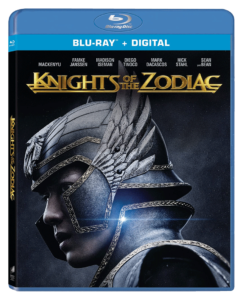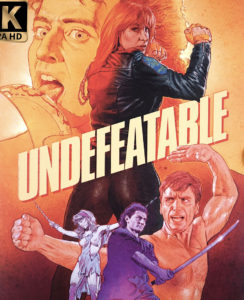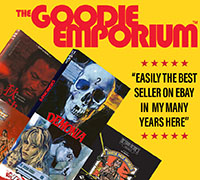In the United States, dog food accounts for 66% of all pet food sales, which highlights that the USA is a dog-loving nation.
However, when it comes to feeding your dog, love is not enough. Affection is often one of the drivers behind the many common dog-feeding mistakes.
Most dog owners don’t err on the side of caution when it comes to feeding their dogs. We’re prone to giving in to their every wish, which is sometimes to their detriment.
If you want what’s best for your pup, keep reading to discover the ins and outs of feeding your pet a healthy dog food diet.
1. Overfeeding Your Dog
Several studies mention obesity as the most common nutritional disorder in companion animals worldwide. While nobody wants their pet to go hungry, overweight animals are more likely to experience health issues, including cancer.
Like humans, dogs need to consume the correct amount of calories daily. If they ingest more calories than they burn, they will gain weight.
Be strong, most dogs will instinctively eat as much as they can. You can’t trust them to monitor their eating habits by providing them with food ad-lib.
Research the recommended calorie count for your dog’s breed and stick to it. You should also weigh them regularly to ensure they’re within the correct parameters for their breed.
Most dog food packaging will contain guidelines on how much to feed your dog, although dogs have different metabolisms. Some stay slim no matter how much they eat, while others put on weight easily.
You can consult your vet or an animal nutritionist if you’re concerned about your dog’s weight gain or weight loss, or if you want nutritional advice.
2. Switching Foods Too Rapidly
Changing your dog’s food without getting them used to the new diet places your dog’s digestive system under pressure. It can result in vomiting and diarrhea.
Always introduce any new food gradually, by mixing a little of the new food into their current meals. Slowly increase the amount of new food every day.
Start with a 70/30 mix, then move on to 50/50, and 30/70 before switching over completely.
Don’t feed your dog any food that’s made for other animals. Cat food may look and smell the same, but it doesn’t have the correct formulation to meet your dog’s nutritional needs.
3. Raw Diet Pitfalls
Raw food diets for dogs are having a moment right now, but are they a good thing or not?
A considered diet compiled with the assistance of your vet can work wonders for your dog. However, there are certain dangers associated with raw food dog diets.
Some recommended ingredients for a raw diet include:
- Organ meats
- Muscle meats
- Ground or whole bone
- Raw eggs
- Selected fruits and vegetables
- Dairy products, like yogurt
Fans of raw food diets claim their dogs have healthier skin, shinier coats, more energy, and better dental health.
Raw meat can become a breeding ground for harmful bacteria like salmonella. Storing dog food in the freezer won’t always kill all the bacteria present.
It’s also difficult to balance the ingredients to provide optimum nutrition for your dog. Overall, feeding your dog a raw diet is a time-consuming and risky business.
4. Not Checking Food Bag Labels
There are many excellent dog food brands available nowadays. Yet, just because a brand is popular doesn’t mean they’re a good fit for your pooch.
It’s important to check the expiry date of the dog food to ensure you’ll finish the bag before that date. Expired dog food is bad for your dog’s health.
In the U.S. the FDA’s CVM regulates pet foods and some states insist on AAFCO standards, too. According to these institutions, manufacturers must list the following information on dog food packaging:
Feeding Instructions
Feeding instructions should indicate how to use the dog food as well as how often you should feed the product. They also have guidelines on how much to feed your dog according to their weight.
In the case of puppy food, these guidelines center on the pup’s age and anticipated adult weight.
Ingredients
Most manufacturers list ingredients by weight or percentage, in descending order. This list should also include percentages of vitamins, minerals, and additives.
Ingredients to look for include:
- Protein
- Carbohydrates from grains
- Fats and Oils
- Water-soluble vitamins C and B-complex
- Fat-soluble vitamins A, D, E, and K
It’s best to serve your dog food that’s made from good-quality human-grade protein. Beef, fish, chicken, and lamb are the best sources of protein for dogs.
You can get dog food made from organically grown sources, too.
Guaranteed Analysis
This refers to the percentage of nutrients found in the food. It lists the minimum level of protein and fats and maximum levels of moisture and crude fiber.
Vitamins, minerals, and additives should have a percentage listed alongside them.
Nutritional Adequacy Statement
This statement indicated that the food provides balanced nutrition according to AAFCO standards. It should also state which life stage the food is best suited to, e.g., adult maintenance or growth/lactation.
Manufacturer’s Information
Dog food packaging must also list the manufacturer, packer, or distributor’s name and address. Some also list a website and toll-free number, but these are not mandatory requirements.
5. Giving Your Dog Table Scraps
We all know the drill. You settle down for dinner only to face the steely-eyed gaze of your faithful companion.
Resist the temptation to share your meal with your dogs. Many common ingredients in human foods have known toxicity for dogs, and more seem to crop up all the time.
While foods like dairy aren’t toxic to dogs, they can cause digestive upsets for dogs. Junk food leftovers are fattening and may contain harmful preservatives.
Processed foods are another no-no as they may contain ingredients harmful to dogs. If you want to spoil your dog with a treat, give them treats specifically produced for them – in moderation.
You must ensure you keep all harmful substances out of your dog’s reach.
Dogs are notorious scavengers. Given half a chance, they will ransack your waste bins and kitchen cabinets.
6. Feeding Too Many Treats
Many pet parents use food as a sign of affection for their pets. It’s true that dogs love to eat but that doesn’t mean they should do so non-stop.
There’s nothing wrong with handing out the occasional treat, but overdoing it will affect their nutrition. Dogs who receive too many treats will become obese eventually and it could put them off their regular food.
Pet treats hamper your efforts to provide a balanced diet, and they can make your dog lose its appetite for regular dog food. Treats should make up no more than 10% of their diet.
It’s a good idea to find other ways to reward them during training. For most dogs, a simple “Good boy/girl” does the trick, but you can also use playtime, a new toy, or petting as a reward.
7. Common Dog Feeding Mistakes Concerning Breed and Age
Don’t buy dog food because you like the packaging, or because you’ve always fed that brand. There are a few more important factors to consider when you choose what to feed your dog.
Puppy food, adult dog food, and senior dog food aren’t manufactured as a marketing ploy. These pet foods contain vitamins and protein concentrations that suit your dog’s life stage.
Puppy food should contain at least 30% protein to help them grow as well as 8 to 9 % fat. Giant breeds don’t require as much calcium as smaller breeds do.
Adult dogs do well on foods containing around 18 to 26% good quality protein. Feeding senior dogs is tricky and you should speak to a nutritionist or your vet about your dog’s specific needs depending on any age-related issues they develop.
Your dog’s activity levels are an important criterion when choosing dog food. It follows that active breeds, like border collies, will need much more energy than a more sedentary breed, such as a bulldog.
Fortunately, you can buy dog food catering to these extreme breeds as well as everything in between.
8. Feeding Unnecessary Supplements
Well-intentioned pet owners often add supplements to their pets’ diets to enhance their health. This is rarely necessary if you’re feeding your dog a well-balanced, high-quality diet.
You don’t need to add anything to your dog’s diet if it’s getting enough minerals, nutrients, and vitamins from commercial dog food.
If you’ve opted for a raw diet or homemade food, you should consider adding a vitamin and mineral supplement to ensure you cover all your bases.
Always speak to your vet about recommendations before you add any supplement to your dog’s regular diet. Don’t give your dog supplements designed for human consumption.
According to anecdotal evidence, some supplements, like CBD gummies, can help alleviate various dog health issues. Be sure to check with your vet before feeding these treats, drops, or kibble.
When you buy CBD Dog Treats online, you must choose a supplier that publishes the test results from each batch of their product, and check that a licensed and accredited laboratory performed the tests.
9. Allowing Your Dog to Eat Too Fast
Dogs can develop gastrointestinal issues, like gas and nausea when they eat too much, too fast. Eating too quickly will cause your dog to feel uncomfortable and may lead to vomiting.
If you have a dog that rushes at mealtimes, rather split their food up into several smaller portions and feed them more frequently.
In extreme cases, you can feed your dog their food one bit at a time, waiting for them to chew and swallow the first helping before dishing up the next. This will force them to eat slower and avoid a gassy, upset stomach.
Bloat is a red flag for owners of large deep-chested breeds like German Shepherds, Boxers, and Great Danes. This terrible condition can kill dogs in a few hours, and surgery to correct it is rarely successful.
When dogs eat too fast, or large breeds eat from a bowl that’s too low, they can develop gastric dilation from the build-up of gas fluid. Symptoms of bloat include a distended belly and visible signs of discomfort, like pacing and vomiting.
One of the best ways to stop your dog from eating too fast is to buy a maze bowl, which limits how fast they can grab their food.
If you own a broad-chested dog breed, always place its bowl on a raised step, that elevates the bowl to the height of its lower chest.
10. Poor Food Hygiene
You must wash your dog’s bowl after every meal. If you don’t keep their food and water bowls clean, bacteria may build up on them. This will make your dog sick.
It’s best to clean them before you feed your dog to ensure they’re spotless. Stainless steel bowls are a good choice for dog owners as they’re easy to clean and lightweight.
Food left outside can also harbor fungus and bacteria. All these factors can negatively impact your dog’s health. Always keep your dog’s bowls indoors and cover up its food supplies so they don’t become contaminated.
Stay on Top of Your Pet’s Health
Dogs are the most widespread pets across the globe. They’ve been by man’s side for centuries and can bring boundless joy into your life.
These treasured pets can also become a source of despair and worry when their health falters. By avoiding these common dog feeding mistakes, you can help ensure your dog stays healthy and enjoys a long, happy, and active life with your family.
Browse our website for all the best information and tips about caring for your best friend, and always consult a veterinarian if you’re concerned about your dog’s well-being.


















22 Comments